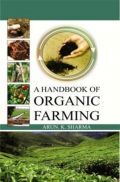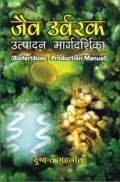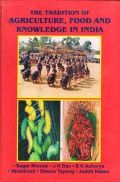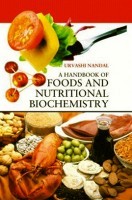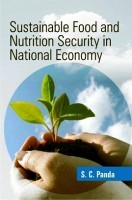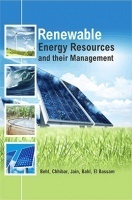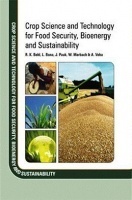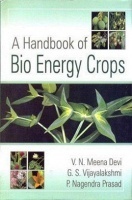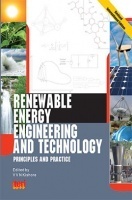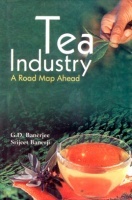The UN Millennium Goals towards Sustainable Development includes food, bioenergy and livelihood as integral components and the most vital concern of our planet Earth. Issues like production and supply of food for caloric and nutritional security for ever increasing population, biomass production for biofuels to meet energy needs of industry and households and generation of employment opportunities, both on farm and off farm for livelihood security have been focusing attention of policy planners and researchers globally. Also land use for agriculture without jeopardizing natural resource base poses a formidable challenge to the agricultural scientists to devise appropriate agriculture production technology to ensure sustainability of production systems and to harness favourable linkages among productivity-profitability and sustainability. Undoubtedly the production advantages of improved agri-technology generated during last five decades have been realized mainly in assured input favourable environments. However this has led to second generation problems like dwindling natural resource base, declining factor productivity, salinization and other soil health factors due to excessive use of agrochemicals and irrigation. Moreover much remains to be done to enhance crop production in stress prone fragile environments, both abiotic and biotic. These problems are further aggravated by global climate change due to global warming whereby cooler regions may become hotter and wetter regions may become drier and vice versa. This intermittent change in agri-ecology would necessitate infusing resilience in crops using genetic options and better agronomic management for damage control.
This book Useful for Renewable Energy, Agriculture Process & Food Engineering.
SECTION I: CROP IMPROVEMENT
1. The Importance of Grain Quality in Food and Nutritional Security
2. Genomic Strategies to Modify Grain Carbohydrates to Diversify Utilization of Cereal Grains
3. Kernel Hardness and Flour Quality Relations in Bread Wheat
4. Characterization of Wheat Genotypes for Grain Quality Traits
5. Agro-Physiological Basis of Crop Improvement for Drought Tolerance
6. Breeding Chickpea for Improved Adaptation to the Semi-Arid Tropical Environments
7. Breeding Hybrids for Enhancing Productivity in Pigeonpea
8. Hybrid Development in Chickpea: Challenges and Possibilities
9. Opportunities and Challenges for Maize Production in India
10. New Sources of Male Sterility Developed Using Biotechnology and Traditional Breeding and their Use for Genetic Improvement of F1 Hybrids of Sorghum
11. Analysis of Genetic Variation and Trait Interrelationship in Wheat
12. Assessment of Crossability Barriers in Interspecific Crosses of Vigna Spp
13. Investigation of Genetic Diversity and Combining Ability in Irradiated Maize
14. Assessment of Genetic Diversity in Jojoba (Simmondsia Chinensis (L.) Schneider) Using Arbitrary DNA (Rapd and Issr) Markers
15. Genetic Structure of A Recombinant Inbred Line Population Derived from A Cross Between Taraori Basmati (Aromatic Indica) and New Plant Type II (Japonica)
16. Issr Fingerprints Identify Hybrids and their Parents in Cotton (Gossypium Spp.)
17. Micropropagation in Ashwagandh (Withania Somnifera (L.) Dunal) Genotype Ws-1
18. Ideotype in Cotton (G. Hirsutum L.) Under Rainfed Conditions
19. Genetic Variability and Correlation Studies Among Rm-Ts Gene Complex Recombinant Lines for Yield and its Attributes in Wheat
20. A Prologue About Karnal Bunt Disease of Wheat
21. Role of Different Genotypes, Age and Growth Regulators on Callus Induction and Plant Regeneration from Immature Embryos of Wheat
22. Characterization of Isolates of Macrophomina Phaseolina, Causal Agent of Charcoal Rot of Cluster Bean On the Basis of Pcr Amplified Rdna Spacer Polymorphisms
23. Study and Use of Wheat Genetic Resources in Czech Collection
SECTION II: ENERGY AND ENVIRONMENT
1. Integrated Environmental Assessments for Decision Making in Agriculture and Forestry
2. Global Scenarios for Biofuels: Impacts and Implications
3. Multihemp - A New Strategy for Combined Production of Biomass for Food, Energy and Industry in Northern Climates
4. Jatropha- A Bio-Diesel and Multipurpose Plant for Salt Affected and Marginal Lands
5. in Vivo Detection of Stress Induced State Changes in Photosynthetic Systems
6. The Effect of Acid Mine Drainage on Soil Microbiology
7. Simulation of Plant Development in Dependence on Climate Change
8. Soil Contamination of Agricultural and Horticultural Sites in Peri-Urban Areas
9. How Can We Reduce Nitrate Input? - Groundwater Protection Strategies in Germany
10. Phyto-Toxicity Assay and Phyto-Remediation of Oil-Sludge-Contaminated Soil with Sorghum Bicolor (L.) Moench
11. Farm Power and Energy in Agriculture
SECTION III: NATURAL RESSOURCE MANAGEMENT
1. Possibility of Rhizosphere Regulation By Root Exudates
2. Ecto-Mycorrhizal and Hydrogel Influence on Leaf Water Potential, Chlorophyll Content and Growth in Populus Canescens Seedlings Subjected to Drought
3. Molecular Diversity of Mesorhizobia: Particularly Rhizobia Infecting Chickpea
4. Alleviation of Adverse Salt Effects on Nodule Functioning in Chickpea
5. Growth and Nutrients Accumulation of Maize Plants as Affected By the Inoculation of Arbuscular Mycorrhizal Fungi
6. Response of Ryegrass to Phosphate in the Reclamation of Coal Mine Soil
7. Reclamation of Sodic Soils through Vermitechnology
8. Disposal of Waste Water Sludge
9. Brackish Water for Crop Production
10. Management Options for Improving Water Productivity in Agriculture
11. Land Use Planning for Management of Agricultural Resources - A Case Study (Jaitpura Micro-Watershed, Indore, M.P., India)
12. Production and Environmental Sustainability-Through Integrated Approach of Nutrient Supply
13. Soil Management Options for Sustainable Crop Production in Vertisols Under Rice-Wheat Cropping System
14. Organic Farming Systems for Long Term Environmental Quality Sustenance
15. Technology for Commercial Production of Trichogramma
16. G-Lactone Derivatives from A Beneficial Rhizobacterium, Pseudomonas Jessenii Ec-S101, Regulate Rhizo-Biocomplex
17. Effect of Nitrogen and Bio-Fertilizer (Azotobacter Strains) on the Flower Yield and Quality of Carnation (Dianthus Caryophyllus L.) Cv. Red Corso
18. Cover Crop Role in Soil Quality Management
19. Effect of Straw Application on Energy Balances in the Long-Term Field Experiment
20. Productivity and Physical Properties of Soil in An Irrigated Pearl Millet (Pennisetum Glaucum) -Wheat System through Integrated Nutrient Supply in Semi Arid Environment
21. Multiple Uses of Crops
22. Sequestration of Carbon in Semi-Arid Tropics By Restoring Degraded Lands: An Appraisal
23. Optimization of Process Parameter of Two Stage Enzymatic Process for Apple Juice Extraction
SECTION IV: SOCIO-ECONOMIC ASPECTS
1. Poverty Reduction through Sustainable Development of Agriculture in Bangladesh
2. Correlates of Socio-Cultural and Personal Variables of Farm Graduates' and their Attitude, Preference Pattern and Job Priorities
3. Gender Livelihood Pattern and Biomass Management Practices Among Farming Systems of Haryana
4. Farmers' Expectations of Farmers' Organizations in Minas Gerais, Brazil: Extension Rhetoric or Practice?
5. Roots of Child Labour in Udaipur District and its Consequences







